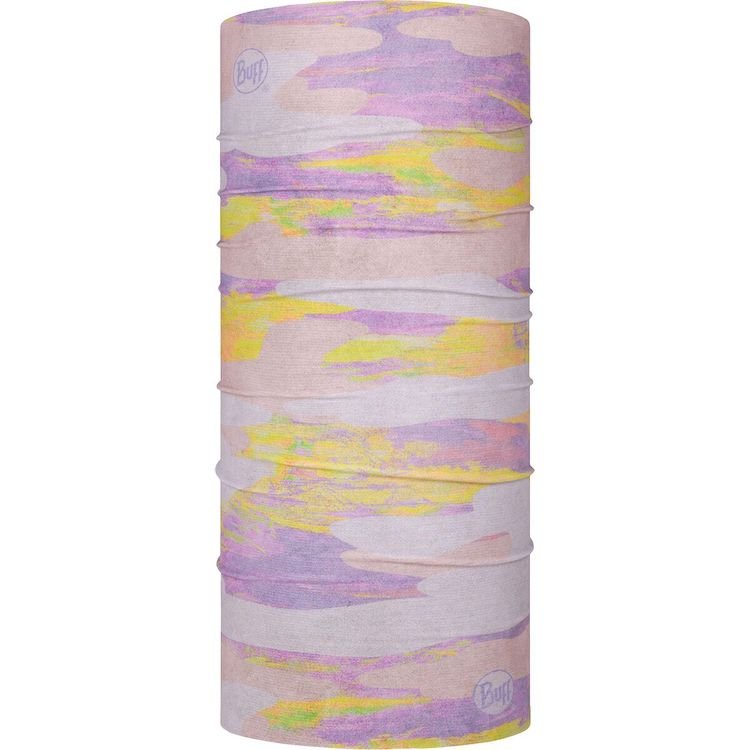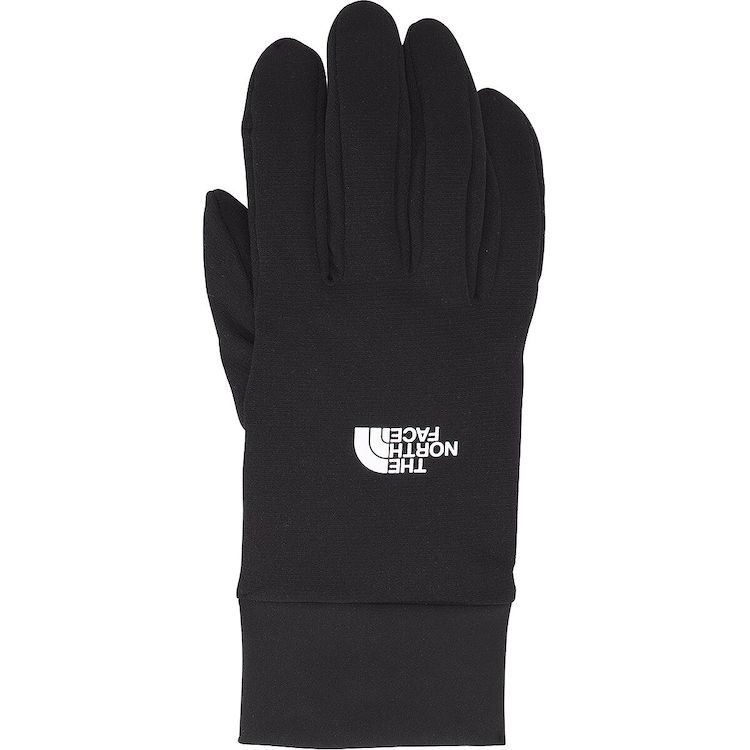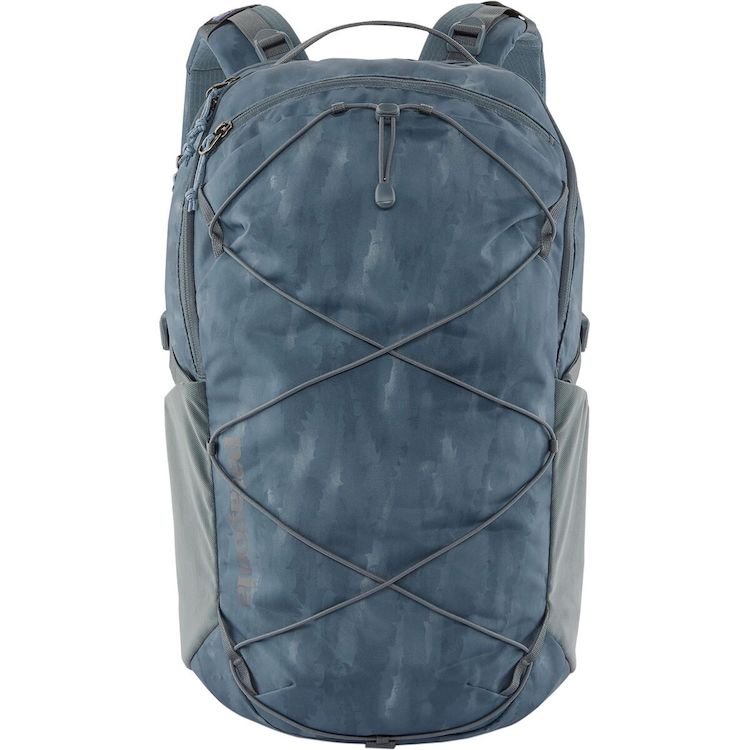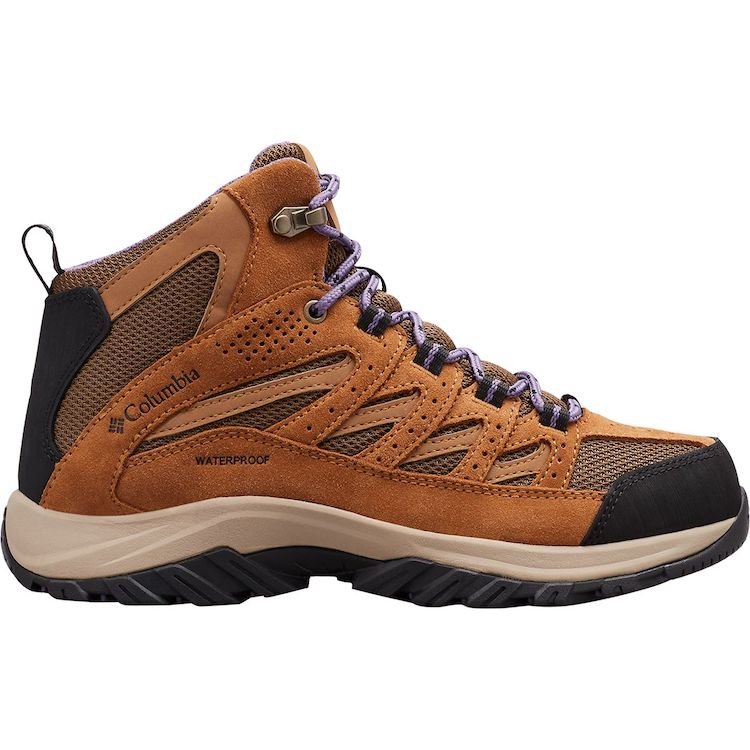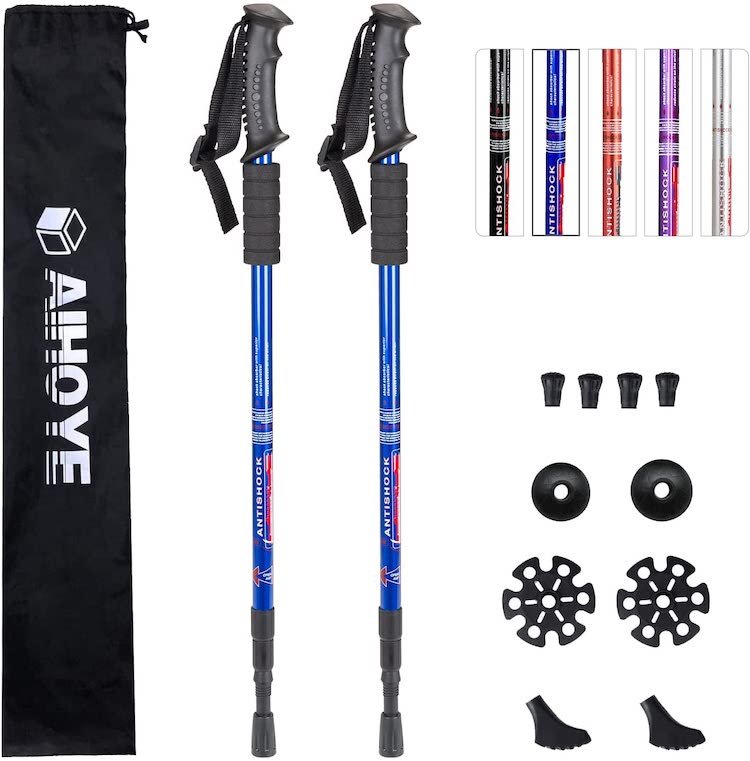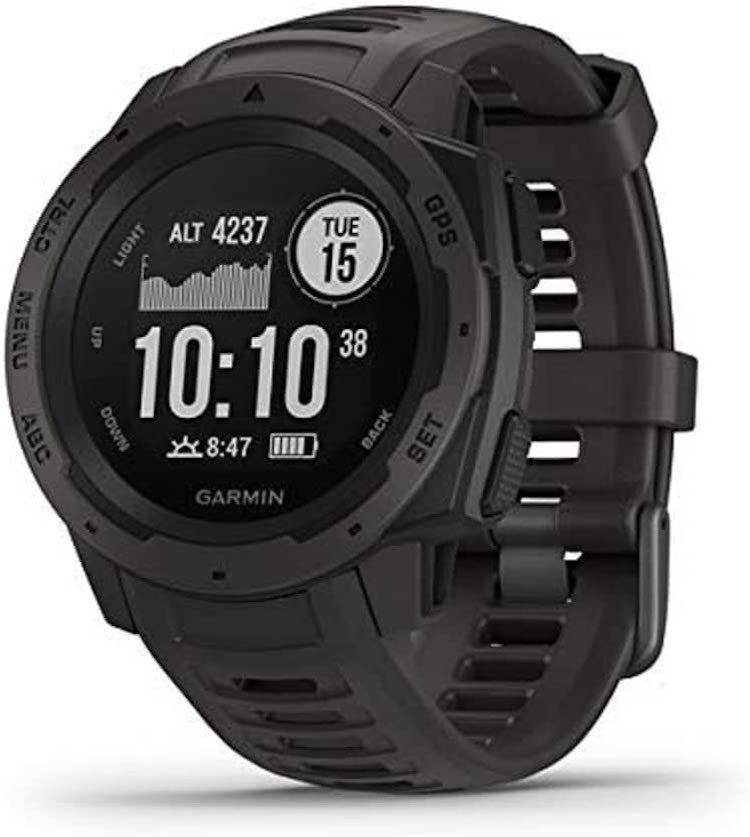23 Hiking Essentials To Bring For Your Next Outdoor Adventure
This page may contain affiliate links. As an Amazon and Rewardstyle affiliate, we may earn a small commission for any purchases made through these links. Click here for the disclosure statement.
There are a few essentials that should go with you on every hike and that you should double-check you always have in your backpack before hitting the trails. Below we have the hiking essentials list so that you are fully prepared for a great hiking adventure and have set yourself up for success!
Water
Hands down the most crucial thing to have on your person while hiking is water. In fact, bringing enough water should be your number one priority. A good tip to remember is to bring 0.5 liters of water per hour of hiking (for each hiker!). If heat and sun are intense that day—or it is a strenuous trail—then double that amount of water (one liter per hour).
You really can’t err on the side of bringing too much water; bring extra if you can. If it becomes apparent halfway through the hike that you went overboard on water, you can always dump a bit of the water-weight out. Better safe than sorry—always!—when it comes to bringing enough water. Dehydration can be deadly.
Some hikers opt for a hydration bladder, which is a convenient and lightweight water reservoir that can easily fit in and mold to the shape of your backpack. This is super beneficial on longer, more arduous, and hot hikes.
Image: Amazon
Navigation
Second to water, you should have a map or, at the very least, adequate knowledge of the trail, the area, and external factors that could affect your hike, such as: weather, wildlife, or number of other hikers in the area.
A physical map is the most secure option, as phone batteries can become depleted, online maps may not download, or your phone may lose signal. Tech issues are not something you want to make a part of your day in the wilderness.
Try to have a physical map and become familiar with the route of the trail before setting out, so that you are aware of the terrain, elevation gain, direction of the trail, and possible landmarks that you will pass along the way.
For myself personally, if I don’t have a physical map of the trail, I will screenshot the route in advance on my phone (in case I lose signal during the hike). Or, since there are often posted trail maps on signage at trailheads, I will also take a picture of that, so that I can reference it when need be. I prefer a paper map, however, that I can keep on my person.
AllTrails is a very popular website and app that has the most extensive data on trails—it provides access to reliable, invaluable information on what to expect from nearly any hike (even if you take just two minutes to research it beforehand).
Nutrition
It’s wise to bring some snacks on longer or more strenuous day hikes. You’re exerting a lot of energy, and it’s unpleasant to find yourself weary and struggling to have the will to put one foot in front of the other by the end of the day. Trail friendly foods include: trail mix, granola bars, apples, dried fruits, sandwiches, tortillas, jerky, ready-made tuna salad pouches, and nuts and seeds.
Remember: it’s pack-in, pack-out.
Weather-Appropriate Attire
Your apparel is an important piece in your hiking essentials list; wear comfortable clothing appropriate for the conditions that you will be hiking in. Not wearing appropriate hiking attire for the climate, season, and environment is an entirely preventable issue simply by making an informed decision beforehand and bringing along a few extra articles of clothing/layers in your pack.
Moisture-wicking fabrics are best, because they regulate your body temperature in both hot and cold temperatures. Look for material such as merino wool, polyester and nylon.
Avoid cotton, as it does not absorb water well and produces an uncomfortable—and potentially hazardous—effect (hiking in wet clothes in the snow is not fun or smart).
Prepare for the worst by bringing a light rain jacket or poncho in the event of rain or thunderstorms.
Think layers. Bring lightweight (but insulated) layers that you can shed or pull on as you see fit. Your base layer is important, as it is closest to your skin and it ensures that you stay dry and cool. You should opt for lightweight materials that can fold up and fit comfortably and lightly in your pack, as opposed to bulky and heavy materials that will weigh down your backpack.
Choose clothing that is specific to the trail and conditions you will be hiking in, which will require some research on your part beforehand. For example, pants may be more appropriate than shorts if there is low, scratchy underbrush, even if it is summertime.
Keep clothing versatility in mind, for the sake of having both multi-purpose convenience on the trail and as a cost-saving measure (because hiking apparel can come with a high price tag). For example, try a pair of hiking pants that have an option to zip off at the knee.
Summer hiking checklist
Sunscreen
Light colors (black and darker colors trap heat)
Image: Backcountry
Bora Bora Booney Hat
Columbia
Image: Backcountry
Polarized Sunglasses
Blenders Eyewear
Image: Backcountry
CoolNet UV Buff
Buff
Winter hiking checklist
Layers! Three layers are recommended: A sweat-wicking base layer, a removable and insulated middle layer that you can always pack away if need be, and an outer layer that is resistant to wind and wetness, such as a fleece jacket or puffer.
Sunglasses (Did you know: On a bright, sunny day in winter, fresh snow can reflect up to 90% of UV radiation.)
Image: Backcountry
Arcadia II Rain Jacket
Columbia
Image: Backcountry
Zip-off Pant
Stoic
Image: Backcountry
PLG FlashDry Glove
The North Face
Image: Amazon
Merino Wool Hiking Socks
Ebmore
Backpack
Your backpack is another critical hiking gear must-have, because you will want to keep your hands free. Choose a backpack size and style that is appropriate to the difficulty and length of the hiking trails that you expect to take on.
Comfort is easily the number one most important factor when selecting a backpack.
Before making a purchase, ask yourself:
Does it fit well?
Do you like to wear it?
Will it accommodate your needs?
Does it have side pockets?
The ability to expand?
A chest or waist strap to distribute weight?
While these are just a few other considerations, your pack could be anything from a fanny pack to a compact hydration backpack to a full-sized, expandable backcountry backpack. Ultimately, use your judgment on what makes sense to you, your hiking level, and the trails you will be on.
Investing in a good hiking backpack is always a smart choice if you foresee many trails in your future, because you will be prepared from the start with a backpack that can hold all of your other hiking essentials—making your adventures comfortable and responsible.
Image: Backcountry
Refugio 30L Day Pack
Patagonia
Image: Backcountry
Atom 8L Sling Bag
Patagonia
Good hiking boots
Great hiking boots make the top of the list of hiking gear must-haves. These are the characteristics that you want out of a pair of good hiking boots:
Sturdy
Waterproof
Broken-in (to prevent blisters or foot pain)
Good tread and traction
Comfortable fit
Ankle injuries due to poor footwear choices are one of the top causes for hiking injuries, and this is entirely preventable. Use reliable footwear: either trustworthy tennis shoes with some tread on the bottom or, ideally, make the wise investment by selecting a pair of hiking boots that can last you for many years to come.
Image: Backcountry
Crestwood Waterproof Hiking Boot
Columbia
Trekking Poles
Trekking poles are recommended when expecting high elevation gain/loss, high altitude hiking, or tricky trail technicality. It adds a tremendous amount of stability and balance when tackling difficult terrain and reduces the stress on your lower body—especially your knees—when going down a steep decline.
Image: Amazon
Hiking Trekking Poles
Aihoye
Pocketknife
Not everyone would say this, but I would say a knife is an essential hiking must-have, depending on the type of hiking you do and how often you go. Knives come in handy for many reasons: self-defense against unfriendly wildlife (or humans), food handling, cutting ropes/cords, first aid needs, starting a fire, and more. Personally, bringing a method of self-defense makes me more confident and self-sufficient as a hiker.
Image: Amazon
ID and money
It is smart to bring some version of self-identification and money when hiking. Why? If you somehow become injured/unconscious, an ID is valuable for your rescuers; if you become lost and end up somewhere unexpected, you’ll have money to get you back to the trailhead and your vehicle. Like water and nutrition, think: Better safe than sorry.
Awareness
Finally, the last thing you should be armed with—but will live in your head instead of your backpack—is awareness. This is your main resource for safety and comfortability on the trail, and goes a long way in how your hiking experience will turn out. It goes hand-in-hand with knowledge, information, and research. Know your environment and know the factors that will be present on your hike.
It is up to you to be prepared; most hiking injuries and mishaps are entirely preventable. Be aware of what is out of your control, and what is within your control. While you cannot predict or change the weather or trail conditions, you can make the necessary decisions and judgement calls that will determine how you experience and adapt to these external circumstances.
You can decide not to step too close to the edge of the cliff. You can decide not to take a swim in a potentially strong current or go off trail. You can decide not to forego the hat on a hot day, or you can decide not to hike a slot canyon on a day where heavy rain is predicted (Cue flash floods).
You are responsible for every decision you make while on the trail, and the hiking gear you choose to bring along is one of those essential decisions.
Questions to ask yourself before setting off on a hike:
How isolated is this trail?
If this is a known area for wildlife encounters, am I prepared?
What is the weather for today, and what was recent weather like?
Is weather likely to change quickly?
Do I have enough water?
Do I have adequate awareness and information on the trail and area?
If I am hiking alone, am I prepared to be fully self-reliant?
A few other hiking gear items to consider having in your pack:
Image: Amazon
LED Head Lamp
GearLight
Image: Amazon
Image: Amazon
Charcoal Fire Starters
Melt Candle Company
Image: Amazon
Instinct GPS Watch
Garmin
Image: Amazon
Solar Charger Bank
Riapow
Image: Amazon
Life Tent Emergency Survival Shelter
Go Time Gear
Image: Amazon
20% Picaridin Insect Repellent
Sawyer Products
Image: Amazon
Multifunctional Compass
Costin
Image: Amazon
Gallon Trash Bags
Amazon
Image: Amazon
Bear Spray
Sabre
It is important to note (again!) that most hiking accidents or hazards are entirely preventable; ones that were not prevented can very often be blamed on poor judgment or poor preparation. To brush up on a mental checklist for how to increase trail awareness and uphold strong trail etiquette, learn how to hike responsibly and respectfully.
Another interesting and important point to consider is to learn about ratings for the level of difficulty and technicality of a trail. However, this rating is entirely subjective; what is a walk in the park for some hikers may just be the hardest hike of someone else’s limited outdoors resume.
If you want to see even more interesting— but slightly morbid—statistics on hiking (maybe avoid if you’re already new or nervous about hiking), here are more statistics on the most common injuries while hiking. I think it’s helpful to be aware of common hiking mistakes.
With the above information and recommendations on essential hiking equipment, you should be all set to enjoy the great outdoors on your next hiking trip. Happy trails!






